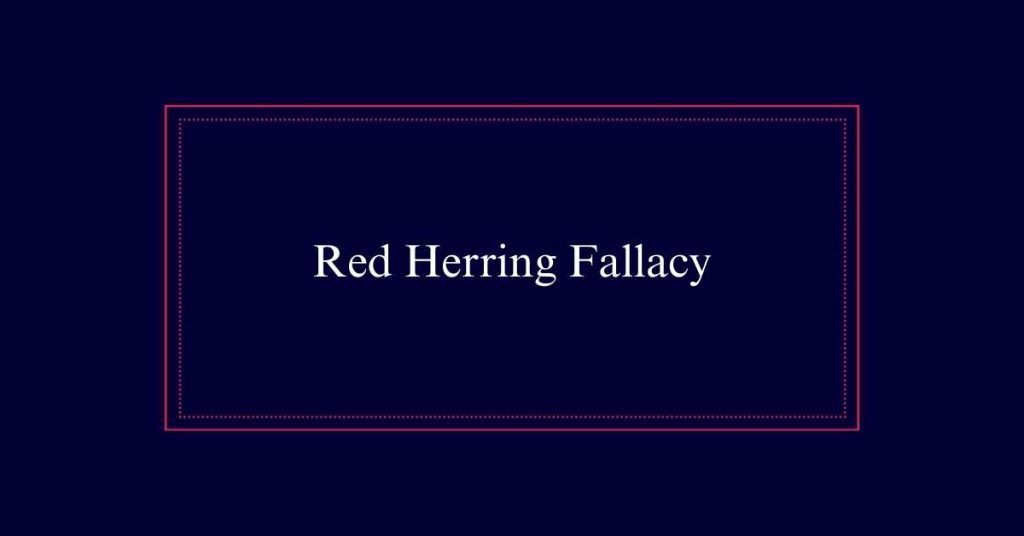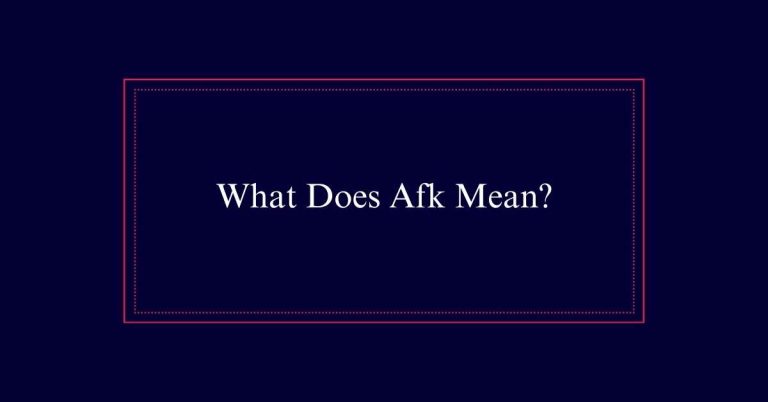Red Herring Fallacy
A red herring fallacy is a tactic used in arguments to divert attention from the main issue by introducing irrelevant information. The term originates from the 19th-century practice of using smoked herring to distract hunting dogs. This fallacy aims to sidestep difficult questions or avoid addressing weaknesses in an argument. Common in political debates and everyday conversations, it shifts focus and creates confusion.
Definition and Purpose
The red herring fallacy is a misleading statement or argument meant to divert attention from the original issue. It operates by introducing an irrelevant topic to distract the audience from the main point.
This tactic is often used to sidestep difficult questions or avoid addressing the weaknesses in one’s argument. By shifting focus, it confuses the audience and derails productive discussion. Red herrings are common in debates, political speeches, and even everyday conversations.
Historical Background
Tracing its roots back to early 19th century, the red herring fallacy was first popularized by British politician William Cobbett in 1807. Cobbett used the term to describe a tactic where irrelevant information or distractions are introduced to divert attention from the main issue at hand.
The metaphor originated from the practice of using a smoked herring to train hunting dogs, which would distract them from the scent they were supposed to follow.
- Frustration: Imagine the exasperation of being led astray in important debates.
- Confusion: Picture the bewilderment caused by misleading arguments.
- Distrust: Experience the erosion of trust when significant discussions are derailed.
- Curiosity: Feel the intrigue of uncovering the origins of such deceptive tactics.
Characteristics of Red Herrings
A red herring often involves introducing irrelevant information to mislead or distract from the main issue. This tactic diverts attention away from the core argument, causing confusion. Key characteristics include:
- Relevance: The information presented is not pertinent to the topic.
- Distraction: Shifts the focus away from the main argument.
- Misleading: Intentionally confuses or misleads the audience.
Below is a table outlining these characteristics:
| Characteristic | Description | Effect |
|---|---|---|
| Relevance | Off-topic information | Confusion |
| Distraction | Shifts focus from main argument | Diverts attention |
| Misleading | Intentionally deceptive | Misinformation |
| Confusion | Causes unclear or muddled discussions | Derails dialogue |
Political Debate Examples
In political debates, red herrings are frequently used to divert attention from challenging questions. Politicians often introduce irrelevant issues to shift the conversation away from difficult topics. This tactic can confuse the audience and obscure the original issue, allowing the speaker to avoid direct answers.
Consider how these diversions impact political discourse:
- Frustration: Viewers feel misled and annoyed.
- Misinformation: Important issues are overshadowed by unrelated topics.
- Distrust: Public confidence in the political process diminishes.
- Confusion: Voters struggle to discern facts from distractions.

Argumentative Uses
Red herrings are often deployed in arguments to deflect criticisms and sidestep direct responses to specific points. By diverting attention away from the main issue, individuals can avoid addressing weaknesses in their position.
For instance, during a heated debate about environmental policies, a speaker might shift the focus to economic growth to dodge questions about pollution. This tactic creates a distraction, making it difficult for the audience to follow the original argument. Red herrings can also appear in everyday discussions, where one party introduces an unrelated topic to evade scrutiny.
Persuasive Communication
Utilizing red herrings in persuasive communication can strategically shift the audience’s focus away from weak points in an argument. This technique can be highly effective in debate and negotiation, as it can divert attention and prevent scrutiny on less defensible positions. By introducing an irrelevant or secondary issue, the speaker can maintain control of the conversation and guide it towards more favorable territory.
- Creates a false sense of security, leading to emotional relief.
- Evokes curiosity, making the audience more engaged.
- Sparks controversy, which can energize and captivate listeners.
- Generates confusion, leading to a feeling of frustration.
Philosophical and Pedagogical Roles
Beyond persuasive communication, the red herring fallacy also plays a significant role in philosophical inquiry and pedagogy. In philosophy, red herrings challenge thinkers to identify irrelevant diversions, sharpening critical analysis. In educational settings, they serve as tools to develop students’ reasoning skills by recognizing and addressing misleading arguments.
| Aspect | Role of Red Herring | Outcome |
|---|---|---|
| Philosophical Inquiry | Tests logical robustness | Enhanced critical thinking |
| Pedagogical Practice | Challenges reasoning | Improved analytical skills |
| Debate Exercises | Identifies fallacies | Better argumentation abilities |
| Classroom Discussions | Promotes engagement | Active learning environment |
Literary Device in Storytelling
Often in storytelling, the red herring fallacy serves as a powerful tool to build suspense and mislead readers. Authors use it to divert attention, creating unexpected twists and keeping audiences guessing. This technique enhances the narrative, adding layers of complexity and intrigue.
Red herrings evoke strong emotional responses:
- *Anticipation*: Readers eagerly turn pages to uncover the truth.
- *Surprise*: Unexpected revelations keep the story exciting.
- *Frustration*: Misleading clues can lead to false conclusions.
- *Relief*: The eventual resolution provides satisfaction.
Identifying Red Herrings
Recognizing red herrings in discussions and texts requires a keen eye for misleading statements that divert from the main issue. To spot a red herring, look for arguments that introduce irrelevant topics, sidestep direct questions, or shift focus away from the original point. These statements often seem valid but lead the conversation astray.
Common examples include politicians changing subjects to avoid criticism or advertisers highlighting unrelated benefits to distract from product flaws.
Impact on Discussions
The red herring fallacy can greatly disrupt meaningful discussions by diverting attention away from the central issues. This derails the conversation and prevents a constructive exchange of ideas. When focus shifts to irrelevant topics, participants may become frustrated and lose sight of the primary objectives.
- Importance: Participants may struggle to follow the main points.
- Frustration: Misleading diversions can create annoyance and reduce engagement.
- Mistrust: Consistent use of red herrings can damage credibility.
- Inefficiency: Time and effort are wasted on irrelevant issues.






